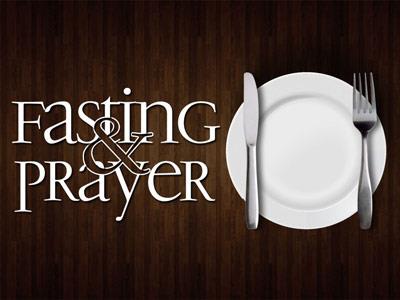-
An Invitation To Prayer Series
Contributed by Timothy Peck on Nov 28, 2017 (message contributor)
Summary: An examination of what the Lord’s Prayer is and three invitations we find from the Lord’s prayer.
The Protestant Reformer Martin Luther once said, “Just as the business of the tailor is making clothes and the business of the cobbler is making shoes, so the business of the Christian is praying.” If that’s true, I have a question for us this morning: How’s business? If you’re like most Christians I know, your prayer life isn’t all that you wish it was. At our elder retreat back in February, our elder board spent a lot of time talking about this issue of prayer and how we as a congregation could grow stronger in our life of prayer together. Most other pastors I talk to echo a similar experience, that they long for their congregations to grow deeper in prayer.
Perhaps that’s why Amazon.com carries over 8,000 different books on prayer. Perhaps that’s why earlier this year we saw a book about prayer climb its way past Harry Potter and the Sorcerer’s Stone to the top of the New York Times bestseller list (Hanegraaff, "The Prayer of Jesus", p. ix). That book, of course, is Bruce Wilkerson’s book "The Prayer of Jabez," and whatever you think about the book its success I think exposes a deep longing on the part of many people to pray better. If the business of the Christian is prayer, how’s business?
A few years ago LIFE magazine asked the Gallup Organization to conduct a poll on American prayer habits (http://www.gallup.com/poll/releases/pr990506.asp). The Gallup organization found that 90% of Americans claim to pray, with 3 out of 4 claiming to pray on a daily basis. Most Americans pray alone, in isolation, with only 11% praying with other people. Yet for all this prayer going on, most people remain ignorant to the basics of the Christian faith, devoid of a close relationship with God.
How’s business in your life this morning? Are you satisfied with where your prayer life is? Or do you mostly feel guilty when your mind starts wandering as you try to pray? Do you hear stories about people who spend entire days in prayer and only feel inadequate and defeated?
Today we begin a new five week series called “Teach Us to Pray.” In this series we’re going to look at the Lord’s Prayer, the prayer Jesus gave his followers. In some ways, reading a book or listening to a sermon on prayer is a little like trying to get marriage counseling by correspondence. There’s no substitute for actually praying, actually spending time with God, learning, trying new things, experimenting, persevering, and seeking. However, it’s my hope that this series on prayer will motivate us to spend a little more time actually praying. In fact, we have a midweek home Bible study starting later this month just focused on learning how to pray. Perhaps some of you will be motivated to attend that home group.
Every Sunday Christians across the world recite the Lord’s Prayer. This prayer is prayed in a variety of different circumstances, from wedding ceremonies to funerals. I first learned this prayer in Alcoholics Anonymous, where after every meeting we’d join hands in a circle and recite this prayer together after our meetings. Yet few people seem to really understand how Jesus intended his prayer to be used. Instead of being an invitation to a rich, deepening life of prayer, for many it’s just words.
Today as we start our series, we’re going to first look at what the Lord’s Prayer is intended to be, and then at three invitations that come from the Lord’s prayer. So take out your outline and turn to Matthew 6:9.
1. What is the Lord’s Prayer?
We start with the question, “What is the Lord’s Prayer?" The answer to that question might seem obvious, but perhaps it’s not so obvious. Actually, according to the New Testament, Jesus taught people this prayer on two different occasions. The first of these occasions—what we find here in Matthew—is during Jesus’ famous sermon on the mount. In this sermon—perhaps the most famous sermon of all time—Jesus presents us with the marks of an authentic follower of Jesus. It’s in that context that Jesus introduces the Lord’s Prayer. Look at v. 9. In the previous 8 verses, Jesus told his followers how not to pray. Here he tells us how to pray. The key word here is the word “how.”
Here we learn that the Lord’s Prayer is A MODEL FOR AUTHENTIC COMMUNICATION WITH GOD.
In other words, Jesus did not intend this prayer to be a formula to recite, but he gave it as a model for what authentic communication with God is like. Jesus didn’t say, “Here’s WHAT to pray,” but he said, “Here’s HOW to pray.”
Now I’m not against reciting the Lord’s prayer. I look at reciting the Lord’s Prayer as like a kindergartner learning his or her ABC’s. It’s good to recite the ABC’s, but the goal of reciting the ABC’s is to get the child to the point where he or she can read and write. Reciting the Lord’s Prayer is helpful in assisting us in understanding how it functions as a model for prayer, but reciting it alone doesn’t get us past the ABCs of prayer.

 Sermon Central
Sermon Central



